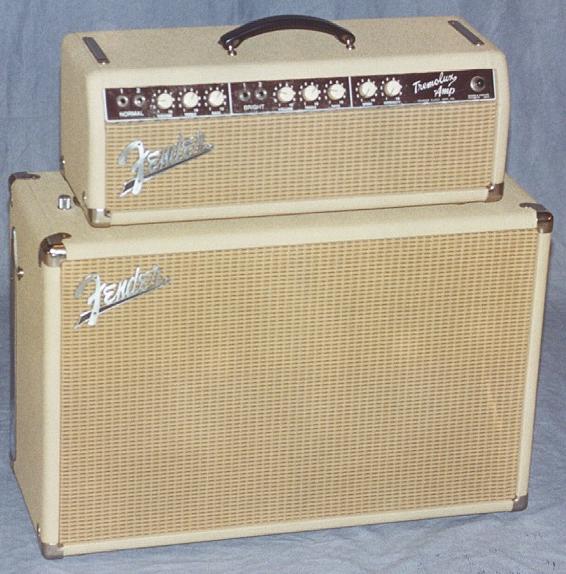
FACTOIDS & TRIVIA
As the amps in the Fender line became more powerful and utilized multiple speakers, the size of the amp increased as well. Leo Fender felt that a convenient design would be to separate the amplifier section from the speaker section for ease of transport. It also allowed the speaker enclosure to have a closed back for increased bass response. This piggyback design was used on five amps: the Tremolux, the Bandmaster, the Bassman, the Showman, and the Dual Showman. The Tremolux amp, as the name implies, has a tube-driven tremolo effect, but it lacks reverb and a separate reverb unit must be used to achieve this effect. Unlike the other piggyback amps which have solid state rectifiers, the Tremolux amp has a tube rectifier which imparts a slight compression effect on the sound when the amp is driven hard. This particular amp has the 6G9-B circuit which was the last of the "blonde amp" circuits to be used before Fender switched to the AB763 "blackface" circuit in late 1963. The main difference between the two models is in the tremolo portion of the circuit. The 6G9-B uses a power tube bias modulation type of tremolo while the AB763 uses an LDR type circuit to send signal ground. The former produces a more pleasing tremolo effect and does not load down the tone circuit which is an inherent disadvantage in the AB763 circuit.
FENDER TREMOLUX AMP 6G9-B (December 1962)

Preamp: Tube; 2 x 12AX7, 2 x 7025
Rectifier: Tube; 1 x 5AR4
Speakers: 2 x 10" Oxford 10K5-4
Channels: 2 (Normal, Bright); 2 inputs per channel
Effects: Tremolo
Controls: Normal - volume, bass, treble; Bright - volume, bass, treble, tremolo intensity, tremolo depth; foot switch for tremolo
Head Dimensions: 8 H x 23 W x 8 1/2 D inches
Speaker Cabinet Dimensions: 17 1/2 H x 28 W x 11 1/2 D inches
Total
Weight: 61 lb
Back
to the Fender Amp Pix Menu